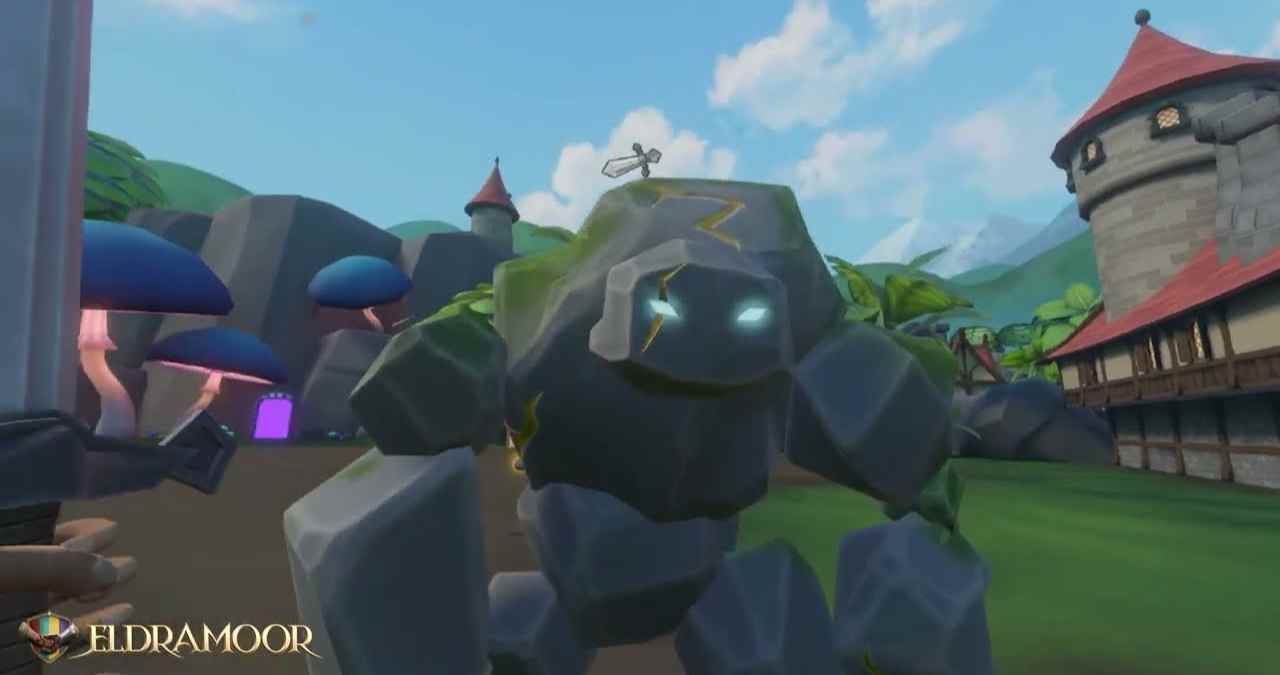Eldramoor: Haven in the Mist is positioning itself as an ambitious take on virtual reality MMOs. The game is being developed for both PC VR and Meta Quest, with early footage and developer updates pointing toward a first-person fantasy world that leans heavily into classic MMORPG structure—only this time from inside the world itself.
What makes Eldramoor stand out is its commitment to a full-scale, open-world experience in VR. It’s not a mini-session battler or arena-based system. It’s built for persistence, exploration, and community-driven play, with cross-platform support planned from the start.
Real-time combat with a physical layer
Combat in Eldramoor is designed for full-body VR. Sword swings, shield blocks, spellcasting—all of it relies on physical movement. This puts the player at the center of every fight, which changes how timing, precision, and stamina matter compared to flat-screen MMOs.
There’s no tab targeting. Instead, weapons need to connect through motion, and blocking works based on angle and timing. Early gameplay footage shows humanoid enemies and wild creatures in open terrain, with positioning and spatial awareness shaping each encounter.
While it leans toward action, it avoids arcade pacing. Movements are slower and deliberate. That choice reflects the game’s overall direction—tactile, grounded, and focused on immersion over speed.
Core MMO systems reworked for VR constraints
The dev team has built classic MMO components like crafting, gathering, and progression into the world, but tuned them to work within a VR-first structure. Inventory management uses physical interactions. Gathering involves manual actions like mining or chopping, and crafting plays out at in-world workbenches.
Character development appears skill-based rather than level-locked, with freedom to experiment across roles instead of hard class restrictions. Social features are planned, including guilds and shared settlements, though those systems are still under development.
The UI is intentionally minimal. Instead of overlay menus, the game uses spatial elements like scrolls, books, or physical maps to convey information. This design supports immersion, though it raises questions about long-term usability for complex systems.
World design focuses on exploration and player agency
The world of Eldramoor is described as untamed. That means fewer marked quest hubs and more emphasis on discovery. Players are expected to move through forests, ruins, and unmarked paths using visual landmarks rather than quest markers.
This approach shifts the pacing. You’re not rushing to the next icon. You’re reading the environment, paying attention to terrain, and learning through trial and error. That design choice suits VR well, where spatial memory and visual cues carry more weight than text prompts.
Dynamic weather, day-night cycles, and ambient audio all support a slower, atmospheric experience. You’re not just navigating through a game map. You’re inhabiting a space that reacts to time and movement.
Cross-platform play and future roadmap
Eldramoor is being built for both standalone and PC VR, with cross-play planned from launch. The team is prioritizing input parity so that neither platform feels compromised. Visual fidelity will differ between headsets, but core mechanics remain consistent.
No hard release date has been given, though the project is expected to enter alpha stages in the coming months. Development updates have shown steady progress, including world design, combat systems, and interface testing.
What’s emerging is a grounded, slower-paced VR MMO focused on embodiment, exploration, and systemic gameplay. Whether Eldramoor can scale those systems for multiplayer longevity remains to be seen, but its direction puts mechanics and worldbuilding ahead of flash. That alone puts it on a short list of VR MMOs actually building from the genre’s roots rather than stripping them down.
Virtual Reality Explorer & Game Reviewer
Always the first to plug in. VRSCOUT dives head-first into the most immersive VR worlds, analyzing mechanics, comfort, innovation, and that elusive “presence” factor. If he says it’s worth it, it probably is.




